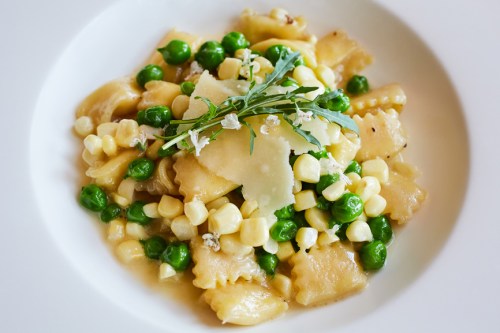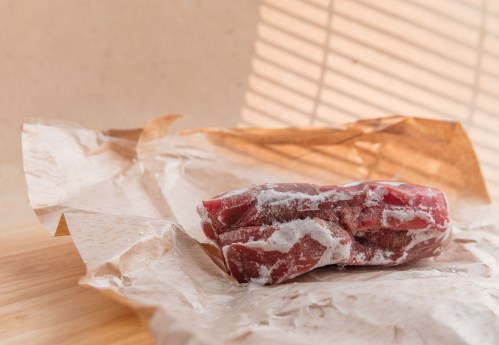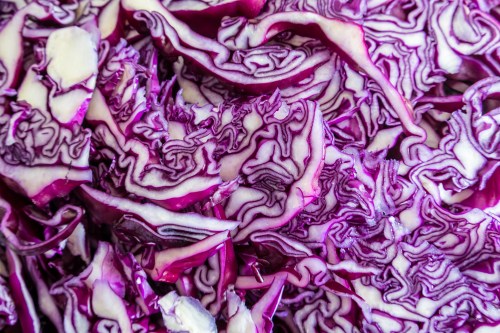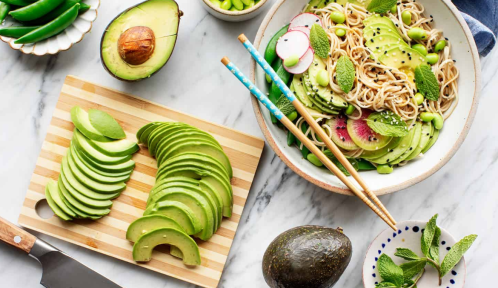Canned vegetables get a really bad rap. They can be bland, salty, and mushy—but only if you don’t prepare them correctly. Whether you regularly buy canned veggies but don’t particularly love them, or COVID-19 panic shopping means you now have a can of corn you don’t know what to do with, Palak Patel, chef at the Institute of Culinary Education, has some tips for making them delicious.
“During our time in quarantine, canned veggies are not only convenient but also readily available. They are inexpensive and have a long shelf life for times when fresh vegetable shopping is not an option,” she says. But there’s a reason people don’t love them. “Canned food uses preservatives to keep vegetables shelf-stable and, in addition, many brands have a high sodium content and therefore they don’t have the same texture as fresh vegetables.”
Though some finesse is needed, it’s not hard to make canned vegetables delicious. Here’s how to make canned vegetables taste good.
How to make canned vegetables taste good
1. Choose no- or low-salt options
“While canned goods are convenient, it is essential to choose canned vegetables that have “no salt” if possible or “reduced sodium” to control salt intake,” says Patel.
2. Wash the cans inside and out
Because dust can settle on the top of cans while in storage, Patel says to wash the cans before opening them. Next, she says to rinse the vegetables under cold water using a colander to remove any preservatives and extra sodium. “This step improves the texture and taste of the vegetables right away,” she says.
3. Don’t overcook the vegetables
“Canned vegetables have been sitting in a salty bath in a metal can for an undetermined amount of time,” says Janine Booth, chef, restauranteur, and founder of beauty brand Sunny Side Up. “This means for some canned veggies you have to be particularly careful not to over cook them into pure mush.” Remember that canned vegetables are already cooked—”the goal is to just warm them through,” says Booth. If you’re using them for stews and soups, Patel says to add them in towards the end of the cooking process so they retain their color and texture.
4. Add flavor
“I rely on my spices and pantry ingredients a lot these days and tend to use bold flavors when it comes to canned vegetables,” says Patel. “Use fat like butter or coconut oil to add flavor, along with fresh herbs. Citrus juice and zest give an extra oomph too.”
Best canned vegetables to buy
1. Corn
Booth loves cooking with canned baby corn. “Baby corn are super resilient and easy not to over cook,” she says. “I throw them into Asian stir fries, simmer them in curries and spicy Thai soups.” Patel likes using both canned corn kernels and creamed corn to make a casserole. “You can add any greens into the mixture to make is healthier,” says Patel. Patel also enjoys preparing corn with Southwestern spices like ancho chili and smoked paprika.
2. Water chestnuts
“Water chestnuts are super crunchy even if they have spent most of their life in a can,” says Booth. “Add them to any type of cooked ground meat like turkey, chicken, beef, pork or lamb along with any combination of sautéed onions, soy sauce, honey, chili, and garlic combination you have in your cupboard. Scoop into crunchy lettuce leaves and you have an amazing lunch or dinner!”
3. Carrots
“Canned carrots are a wonderful option for purees and soup base,” says Patel. “They are naturally sweet and the flavor pairs nicely with earthy spices and fats like butter.” She likes to prepare them with Indian spices like turmeric, cumin, or coriander. Booth makes canned carrots with reduction of reduced orange juice, honey and thyme and cold butter.
4. TOMATOES
Okay we know tomatoes are a fruit, but they deserve a spot here. Canned tomatoes are one most popular canned food items, and can be used in tons of recipes ranging from shakshuka and bolognese to soups and burrito bowls.
Sign Up for Our Daily Newsletter
Get all the latest in wellness, trends, food, fitness, beauty, and more delivered right to your inbox.
Got it, you've been added to our email list.











